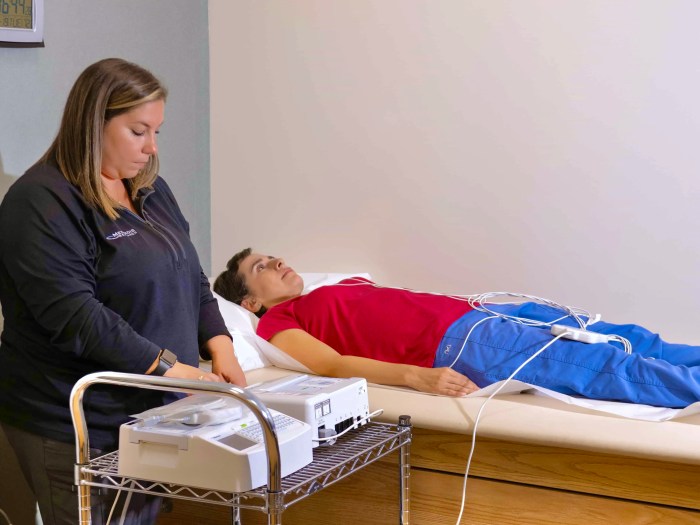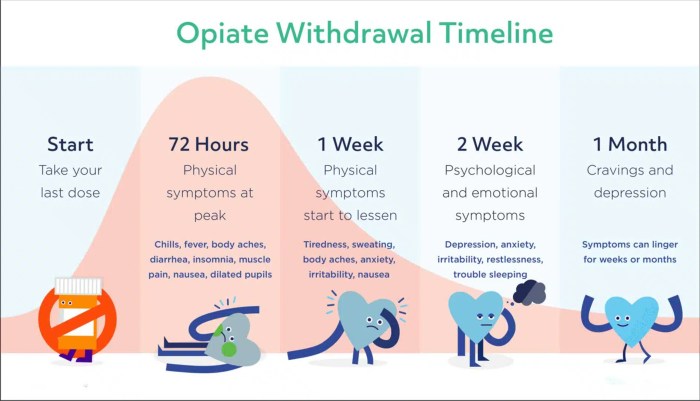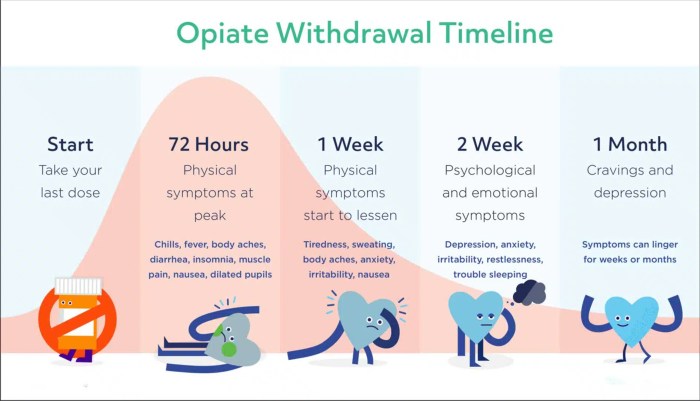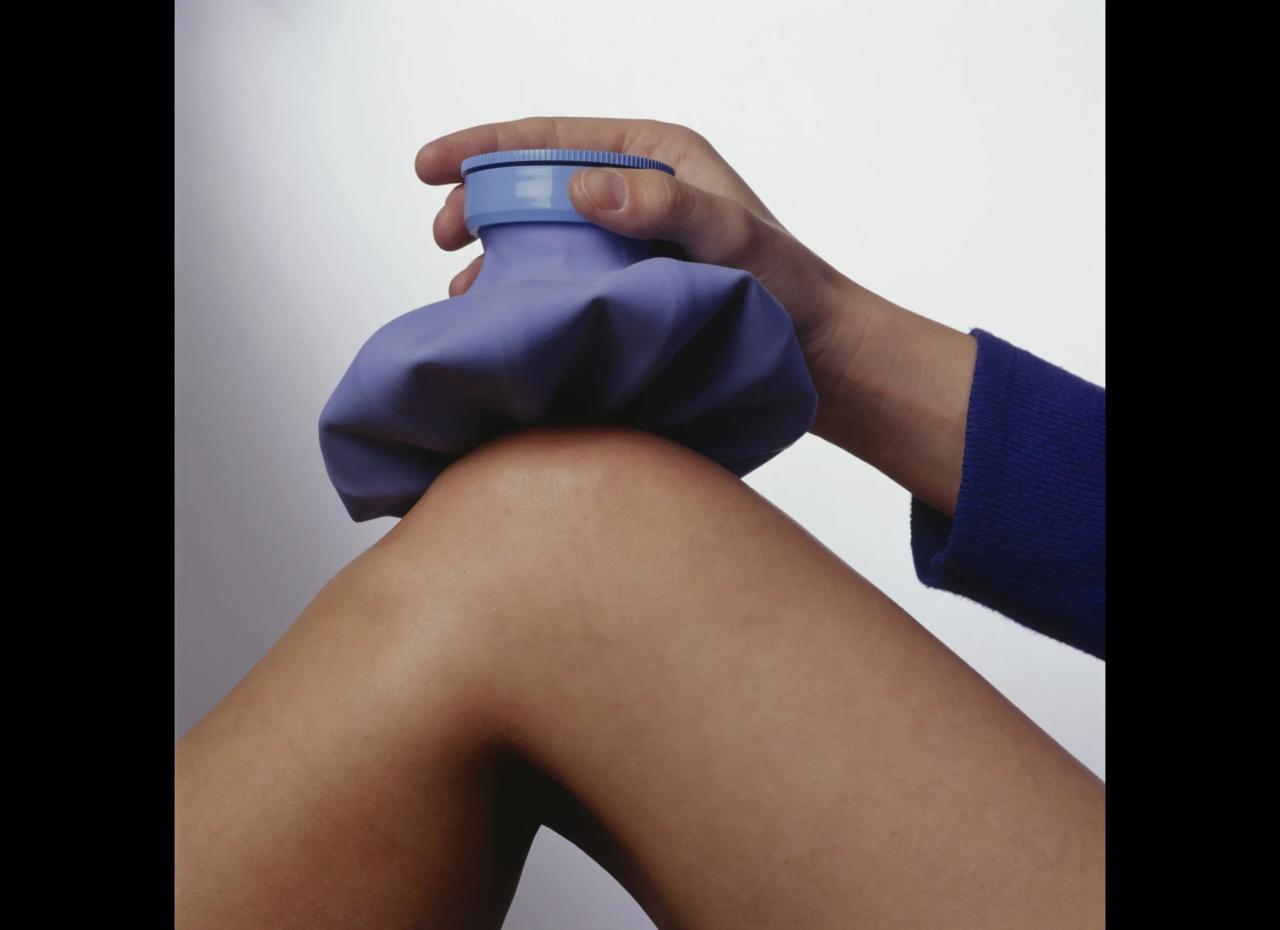Pediatric migraines symptoms and treatment methods is a crucial topic for parents and healthcare professionals alike. Understanding the various symptoms, diagnostic processes, and effective treatment options is key to managing these debilitating headaches in children. This exploration dives deep into the complexities of pediatric migraines, offering a comprehensive overview for a better understanding.
This article will cover everything from defining pediatric migraines and differentiating them from other childhood headaches, to outlining common symptoms and potential triggers. We’ll explore the diagnostic procedures, from physical examinations to neuroimaging, and delve into a wide range of treatment options, including medications, lifestyle modifications, and alternative therapies. The importance of parental involvement and ongoing monitoring will also be emphasized.
Defining Pediatric Migraines

Pediatric migraines, a common type of headache in children, significantly impact their daily lives. Understanding the different types and characteristics of these headaches is crucial for effective diagnosis and management. Unlike tension headaches or sinus headaches, migraines are often characterized by throbbing pain, nausea, and sensitivity to light and sound.Migraines in children often manifest differently than in adults, which can lead to misdiagnosis.
Identifying the specific type of migraine is essential for tailoring appropriate treatment strategies. Accurate diagnosis ensures children receive the right support and can avoid unnecessary and potentially harmful interventions.
Prevalence and Impact
Pediatric migraines are surprisingly prevalent, affecting a substantial portion of children. Studies suggest that migraines can impact a child’s ability to attend school, participate in social activities, and maintain a healthy lifestyle. The impact can extend to family dynamics, as caregiving responsibilities often increase for parents and caregivers.
Classifications of Pediatric Migraines
Migraines are categorized into subtypes based on the presence or absence of aura and other associated symptoms. Understanding these classifications aids in proper diagnosis and management.
Types of Pediatric Migraines
| Feature | Migraine with Aura | Migraine without Aura |
|---|---|---|
| Aura Symptoms | Visual disturbances (e.g., flashing lights, blind spots), sensory changes (e.g., tingling or numbness), language difficulties, weakness, or other neurological symptoms that precede the headache. | No aura symptoms are present. |
| Pain Characteristics | Headache is often described as throbbing, pulsating, or unilateral (one-sided). The pain intensity can vary from moderate to severe. | Headache is typically throbbing, pulsating, and unilateral, but can also be bilateral (both sides of the head). Intensity ranges from moderate to severe. |
The table above highlights the key distinctions between migraine with aura and migraine without aura, providing a framework for understanding the different types of pediatric migraines. Differentiating these types is essential for appropriate management strategies. For instance, a child experiencing visual disturbances before a headache might require a different approach than a child with a typical migraine without aura.
Identifying Symptoms
Understanding the diverse symptoms of pediatric migraines is crucial for prompt diagnosis and effective management. Recognizing these symptoms, even when they differ from the typical adult migraine experience, can lead to timely intervention and alleviate suffering. Children often express their pain and discomfort in unique ways, making accurate identification a challenge.Identifying the specific triggers for pediatric migraines is also vital.
Knowing these triggers can empower families to proactively manage potential migraine episodes. By understanding how environmental, dietary, and emotional factors can influence the onset of migraines, children and their caregivers can work together to minimize triggers and reduce the frequency of these debilitating headaches.
Common Headache Characteristics
Headaches in children with migraines can manifest in various ways. They may describe the pain as throbbing, pulsating, or even stabbing. The location of the headache can vary, sometimes localized to one side of the head or the entire head. The intensity of the pain can range from mild to severe, impacting a child’s ability to focus and participate in daily activities.
Some children might experience a sensation of pressure or tightness around their head.
Other Potential Symptoms
Beyond the headache itself, children experiencing migraines often exhibit other accompanying symptoms. These symptoms can include nausea, vomiting, sensitivity to light (photophobia), and sensitivity to sound (phonophobia). Some children might experience dizziness or altered senses of smell or taste. These accompanying symptoms can significantly impact a child’s well-being and daily functioning.
Variations in Symptoms Across Children
Migraine symptoms can vary significantly from child to child. One child might primarily experience intense throbbing pain on one side of the head, accompanied by nausea. Another child might describe a dull, aching sensation throughout the head, along with heightened sensitivity to light and sound. A child might have an aura, which could involve visual disturbances, numbness, or tingling before the headache begins.
The intensity and duration of these symptoms can also differ greatly.
Triggers for Pediatric Migraines
Identifying triggers for pediatric migraines can be challenging, but recognizing patterns is key to minimizing their impact. Environmental factors like changes in weather, strong smells, or loud noises can act as triggers. Dietary factors, such as eating certain foods or experiencing food allergies, can also contribute. Emotional factors like stress, anxiety, or even excitement can be significant triggers.
Understanding these potential triggers empowers parents and children to make informed choices and develop strategies to avoid or mitigate them.
Categorizing Symptoms by Frequency and Severity
| Symptom | Frequency | Severity ||—|—|—|| Headache | Often, but not always daily | Mild to severe, potentially debilitating || Nausea | Frequent during an episode | Moderate to severe, can lead to vomiting || Vomiting | Less frequent, but can occur during severe episodes | Severe, can cause dehydration |
Diagnostic Procedures: Pediatric Migraines Symptoms And Treatment Methods
Figuring out what’s causing those painful headaches in kids can be tricky. A thorough diagnostic process is crucial for accurately identifying pediatric migraines and ruling out other potential conditions. This involves a combination of evaluating medical history, performing physical examinations, and using various diagnostic tools. It’s a collaborative effort between parents, pediatricians, and potentially specialists to ensure the best possible outcome for the child.The diagnostic process for pediatric migraines isn’t a one-size-fits-all approach.
It relies heavily on a detailed understanding of the child’s symptoms, their medical history, and a careful physical examination. Crucially, the process emphasizes ruling out other potential causes of headaches, including infections, structural abnormalities, and certain neurological conditions. This comprehensive approach helps ensure accurate diagnoses and appropriate treatment plans.
Pediatric migraines can manifest in a variety of ways, from intense headaches to nausea and even vomiting. Understanding these symptoms and appropriate treatment methods is crucial for parents and caregivers. While exploring various approaches, it’s also important to consider when prescription drugs might be necessary for managing certain conditions, such as heart disease. For instance, seeking expert advice on when prescription drugs are the best course of action for heart disease is essential.
Fortunately, there are resources available to guide you through this process. This can help in the long run for effectively managing pediatric migraine symptoms and treatment options. ask an expert when should prescription drugs be used to heart disease Ultimately, a holistic approach, considering all possible avenues, is key to managing these challenging childhood conditions.
Medical History Evaluation
Gathering a comprehensive medical history is essential in diagnosing pediatric migraines. This includes details about the frequency, duration, and intensity of headaches, along with associated symptoms like nausea, vomiting, and light sensitivity. A detailed account of the child’s past illnesses, medications, and family history of headaches is also crucial. This information helps paint a picture of the child’s health and provides valuable clues about the nature of their headaches.
Parents can contribute significantly to this process by keeping detailed records of their child’s symptoms.
Physical Examinations
A thorough physical examination is a critical component of the diagnostic process. The examination aims to identify any physical signs that could indicate an underlying cause other than migraine. This includes checking for fever, neck stiffness, or other signs of infection. The examination also involves assessing the child’s overall health and well-being. Neurological function, including reflexes and coordination, is also evaluated.
Physical examinations help narrow down the possible causes of the headaches.
Pediatric migraines can manifest in various ways, from intense headaches to nausea and even vomiting. Treatment often involves a combination of medication and lifestyle adjustments. While this can be challenging, it’s crucial to understand that similar complexities exist in other chronic pain conditions, such as pudendal neuralgia chronic pelvic pain , which can also significantly impact a child’s quality of life.
Ultimately, recognizing the symptoms and seeking appropriate medical care is key to effective management for any type of chronic pain, including pediatric migraines.
Importance of Ruling Out Other Potential Causes
Headaches can arise from various conditions, and it’s vital to differentiate between migraine headaches and other possible causes. These include infections (like meningitis or sinusitis), structural abnormalities (like tumors), and certain neurological conditions. The diagnostic process aims to meticulously rule out these alternative diagnoses before concluding that the headache is a migraine. This cautious approach ensures that the child receives the correct treatment for their specific condition.
Diagnostic Tools
Neuroimaging plays a vital role in the diagnostic process. Neuroimaging techniques, such as Magnetic Resonance Imaging (MRI) or Computed Tomography (CT) scans, can help identify structural abnormalities within the brain that might be responsible for the headaches. These scans can reveal tumors, blood clots, or other structural issues. These scans are typically employed only when the medical history and physical examination raise concerns about a non-migraine cause.
Other diagnostic tools, such as blood tests, may also be used to rule out certain infections or other systemic conditions.
Diagnostic Flowchart
Step 1: Detailed Medical History & Physical Exam
→ Step 2: Rule Out Other Potential Causes (Infections, structural issues, etc.)
→ Step 3: Neuroimaging (if necessary) (MRI or CT scan)
→ Step 4: Diagnostic Conclusion (Migraine or other condition)
Treatment Methods
Navigating pediatric migraines can be challenging, and effective treatment hinges on a personalized approach. Understanding the diverse treatment options available, from medication to lifestyle modifications, empowers parents and caregivers to actively participate in managing their child’s well-being.
The key is to work closely with a pediatrician or neurologist to develop a tailored strategy that addresses both acute attacks and long-term prevention.
Effective management of pediatric migraines often involves a combination of approaches. Parents should be prepared to explore various strategies, adapting and adjusting as needed based on their child’s specific response and individual needs. Finding the right balance between different treatment methods is crucial for achieving optimal outcomes.
Acute Treatment Strategies
Acute treatment focuses on rapidly relieving the symptoms of an ongoing migraine attack. Several medications are commonly used for this purpose, each with its own advantages and disadvantages. Early intervention can often reduce the duration and intensity of the attack.
- Over-the-counter pain relievers: Simple analgesics like ibuprofen or acetaminophen are frequently the first line of defense for mild to moderate migraine pain. These medications are generally safe for children but may not be sufficient for severe attacks. Dosage should always be carefully considered based on the child’s age and weight.
- Prescription medications: For more severe or frequent migraines, a doctor may prescribe triptans, a class of medications specifically designed to treat migraine attacks. Triptans work by constricting blood vessels in the brain, reducing inflammation and pain. However, these medications should be used under strict medical supervision to avoid potential side effects, especially in children with specific health conditions.
- Other acute therapies: In certain cases, a doctor might recommend other acute therapies like the use of a cold compress or relaxation techniques to alleviate migraine symptoms. These are often used in conjunction with medication.
Preventive Treatment Strategies
Preventive strategies aim to reduce the frequency and severity of migraine attacks over time. These approaches are crucial for children who experience migraines frequently or have severe attacks.
- Lifestyle modifications: Regular sleep schedules, stress reduction techniques, and a balanced diet can significantly impact migraine frequency. Identifying and managing triggers, such as specific foods, environmental factors, or stress, is often a key component of a preventative plan.
- Medications: In addition to acute treatment, certain medications, such as anti-depressants or anti-seizure drugs, can be used to prevent migraines. These medications can have a significant impact on the overall frequency and intensity of migraines. The decision to use preventative medication should be made in consultation with a doctor.
- Alternative therapies: Some parents explore alternative therapies like acupuncture, biofeedback, or massage therapy. While these therapies may provide relief for some children, their effectiveness in preventing migraines needs further scientific research and confirmation.
Parental Involvement
Parental involvement is critical in managing pediatric migraines. Parents play a vital role in recognizing symptoms, supporting their child’s treatment plan, and maintaining open communication with healthcare professionals. Understanding the triggers and patterns associated with their child’s migraines empowers parents to proactively manage potential attacks.
- Communication: Open communication between parents, children, and healthcare providers is essential. Parents need to clearly communicate their child’s symptoms, triggers, and responses to treatment.
- Support and encouragement: Providing emotional support and encouragement is vital for a child experiencing migraines. A supportive environment can help a child cope with the challenges of migraines.
- Adherence to treatment plan: Consistent adherence to the prescribed treatment plan is crucial for managing migraines effectively.
Treatment Summary Table
| Treatment Method | Description | Potential Side Effects |
|---|---|---|
| Over-the-counter pain relievers (e.g., ibuprofen, acetaminophen) | Relieve mild to moderate pain associated with migraine attacks. | Possible stomach upset, allergic reactions (rare). |
| Prescription triptans | Specifically designed to treat migraine attacks by constricting blood vessels. | Nausea, dizziness, tingling sensations, potential for heart problems (rare). |
| Preventive medications (e.g., anti-depressants, anti-seizure drugs) | Reduce the frequency and severity of migraine attacks. | Drowsiness, nausea, changes in appetite, possible interactions with other medications. |
| Lifestyle modifications (e.g., diet, stress reduction) | Reduce migraine triggers and improve overall well-being. | Requires lifestyle changes, potentially slow-acting. |
| Alternative therapies (e.g., acupuncture, biofeedback) | May provide relief for some children. | Limited scientific evidence regarding effectiveness and potential side effects. |
Lifestyle Modifications for Management
Navigating pediatric migraines can feel overwhelming, but proactive lifestyle adjustments can significantly reduce their frequency and intensity. Understanding the role of daily habits in migraine management empowers parents and children to take control of their well-being. By making subtle yet impactful changes, we can create a more supportive environment for managing these headaches.
Effective migraine management often involves more than just medication. Lifestyle choices play a crucial role in preventing and minimizing migraine episodes. A consistent sleep schedule, a balanced diet, and stress-reduction techniques can all contribute to a significant improvement in overall migraine control. Implementing these strategies can make a tangible difference in a child’s quality of life.
Maintaining a Regular Sleep Schedule, Pediatric migraines symptoms and treatment methods
Adequate sleep is essential for overall health and well-being, and even more critical for children experiencing migraines. A consistent sleep schedule helps regulate the body’s natural rhythms, promoting better mood, focus, and reduced stress. Irregular sleep patterns can disrupt the body’s natural hormonal balance, increasing the likelihood of migraine triggers.
Establishing a consistent sleep routine, including a set bedtime and wake-up time, even on weekends, can help regulate the body’s internal clock. Creating a relaxing bedtime routine, such as a warm bath or reading a book, can signal to the body that it’s time to wind down. Limiting screen time before bed can also significantly improve sleep quality.
A Healthy Diet for Migraine Prevention
Food sensitivities and dietary triggers can significantly impact migraine frequency and severity in children. A balanced diet rich in fruits, vegetables, whole grains, and lean proteins provides the necessary nutrients for optimal health. Conversely, processed foods, sugary drinks, and excessive caffeine intake can often act as migraine triggers.
It is crucial to identify any potential food triggers through careful observation. Keeping a food diary can help pinpoint specific foods or food groups that may be exacerbating migraine episodes. Consulting with a registered dietitian can offer personalized dietary recommendations tailored to the individual child’s needs. Hydration is equally important. Ensuring adequate water intake can help prevent dehydration, which is sometimes linked to migraine episodes.
Stress Management Techniques
Chronic stress is a known trigger for migraines in children. Stress can manifest in various ways, from academic pressures to social anxieties. Implementing stress-reduction techniques can be instrumental in managing migraine frequency and intensity.
Mindfulness exercises, deep breathing techniques, and yoga can help children learn to manage stress effectively. These techniques can help children calm their nervous systems, reduce anxiety, and improve overall well-being. Encouraging participation in relaxing activities, like listening to music, spending time in nature, or engaging in hobbies, can also contribute to stress reduction.
Healthy Habits for Daily Routines
Incorporating healthy habits into daily routines can positively impact migraine management. These habits should be age-appropriate and tailored to the child’s personality and preferences. Physical activity, for instance, is a vital component of overall health and can help reduce stress and improve sleep quality.
Regular exercise, such as playing sports or participating in physical activities, can help children release pent-up energy and reduce stress. Promoting physical activity, even through simple activities like brisk walks or playing outdoors, can significantly contribute to managing migraines.
Alternative Therapies and Complementary Approaches

Navigating the world of pediatric migraines can be challenging, and parents often seek alternative or complementary therapies alongside traditional treatments. These approaches can offer potential benefits for managing symptoms, but it’s crucial to understand their limitations and potential risks. This exploration will delve into alternative therapies, including acupuncture, biofeedback, and other modalities, highlighting their roles in managing pediatric migraines.
Exploring alternative therapies alongside conventional medicine can provide a more comprehensive approach to managing pediatric migraines. These methods may offer additional support, but always prioritize open communication with your child’s healthcare provider to ensure a coordinated and safe treatment plan.
Acupuncture
Acupuncture, an ancient Chinese medicine practice, involves inserting thin needles into specific points on the body. Proponents suggest that acupuncture can stimulate the nervous system, reduce pain signals, and promote overall well-being. Studies on acupuncture’s efficacy in migraine treatment are ongoing, and results are not universally consistent. Some studies indicate potential benefits in reducing migraine frequency and intensity, while others show limited or no effect.
Biofeedback
Biofeedback techniques help individuals become more aware of their physiological responses, like heart rate and muscle tension. By providing real-time feedback, biofeedback aims to teach children to control these responses and manage stress, a potential trigger for migraines. This method is often used alongside other therapies, and it can be particularly beneficial for children who are learning to identify and manage their stress responses.
Pediatric migraines can manifest in various ways, from classic throbbing headaches to nausea and vomiting. Treatment often involves a combination of lifestyle adjustments and medications, sometimes including exploring potential underlying conditions like an overview of fatty liver disease. Understanding the interplay between these conditions is crucial for developing effective strategies to manage pediatric migraine symptoms and prevent future episodes.
For more insights into fatty liver disease, check out this helpful resource: overview of fatty liver disease. Ultimately, a personalized approach tailored to the individual child’s needs is key to successful management of pediatric migraines.
Other Therapies
A variety of other therapies are sometimes used in conjunction with traditional treatments. These include herbal remedies, dietary changes, and relaxation techniques. It’s important to note that the efficacy of many herbal remedies is not fully understood or supported by scientific evidence.
Case Studies and Examples
Limited case studies suggest that certain alternative therapies may provide relief for some children. For example, a small-scale study might have shown a reduction in migraine frequency in a group of children using a specific type of herbal remedy, but more robust research is needed. The results from case studies should be considered in conjunction with the limitations and potential risks of the therapies.
Potential Benefits and Limitations
Alternative therapies can potentially provide relief from migraine symptoms and offer a holistic approach to managing the condition. However, it’s crucial to understand that these methods may not be suitable for all children, and they are often not scientifically proven to be effective. Furthermore, some alternative therapies might interact with traditional medications, potentially leading to adverse effects. Parents should always consult with their child’s pediatrician before introducing any alternative therapy to ensure it aligns with their child’s overall health plan.
Monitoring and Follow-up
Staying on top of pediatric migraines involves more than just treatment; it’s about ongoing vigilance and proactive communication. Regular monitoring allows for adjustments to treatment plans, early detection of potential complications, and empowering families to better manage these episodes. This proactive approach fosters a stronger partnership between parents, children, and healthcare providers.
Effective monitoring isn’t just about tracking symptoms; it’s about understanding the child’s experience and tailoring care to their unique needs. This process ensures that treatment remains effective and minimizes potential side effects. It’s crucial to recognize that migraine management is a dynamic process, requiring adjustments based on individual responses.
Tracking Symptom Frequency and Severity
Regular tracking of migraine episodes provides valuable data for both parents and healthcare providers. Consistent documentation helps identify patterns, triggers, and potential contributing factors. This detailed record becomes a critical tool for refining treatment strategies.
- Symptom Frequency: A consistent record of how often migraines occur (e.g., daily, weekly, monthly) is essential. A log, chart, or app dedicated to migraine tracking can be helpful for recording each episode, including the time it started, duration, and perceived intensity.
- Symptom Severity: Beyond frequency, recording the intensity of each migraine is equally important. Parents can use a visual analog scale (VAS) or a numerical rating system to quantify pain levels, or simply describe the impact on daily activities.
- Symptom Characteristics: Note any associated symptoms like nausea, vomiting, photophobia (sensitivity to light), phonophobia (sensitivity to sound), or aura (visual disturbances). This additional information can provide crucial insights for diagnosis and treatment refinement.
Communication Strategies
Open communication between parents, children, and healthcare providers is paramount. Children should be involved in the process, allowing them to express their experiences and concerns.
- Open Dialogue: Encourage children to express how migraines affect them. Use age-appropriate language and create a safe space for them to share their feelings and observations.
- Shared Decision-Making: Involve the child in discussions about their treatment options, especially as they mature. This fosters a sense of ownership and empowerment.
- Regular Check-ins: Schedule regular check-ins with the healthcare provider to review progress, discuss any concerns, and adjust treatment as needed.
Managing Medication Side Effects
Medication side effects are a common concern in migraine management. Proactive strategies can help minimize these effects.
- Medication Review: Regularly review medications with the healthcare provider to identify potential side effects and explore alternative options if necessary. Adjusting dosages or switching to different medications may be needed.
- Side Effect Monitoring: Parents should meticulously monitor for any side effects, noting the onset, duration, and intensity of symptoms. Early detection allows for prompt intervention and adjustment to the treatment plan.
- Alternative Strategies: Exploring non-pharmacological approaches alongside medication, such as lifestyle modifications, can reduce the need for higher medication doses. Consider dietary changes, stress reduction techniques, and sleep hygiene improvements.
Follow-up Appointments
Regular follow-up appointments are critical for evaluating the effectiveness of the treatment plan and adjusting as needed.
- Frequency: Follow-up appointments should be scheduled based on the individual child’s needs and the severity of their migraines. These appointments should allow for thorough discussion and adjustments to the treatment strategy.
- Comprehensive Assessments: Each follow-up visit should include a comprehensive assessment of symptom frequency, severity, and any changes in the child’s overall well-being. This allows for timely intervention and adjustment to the treatment strategy.
- Treatment Adjustments: The healthcare provider should carefully review the collected data and make necessary adjustments to the treatment plan based on the child’s response. This dynamic approach ensures that treatment remains effective and minimizes the impact of migraines on the child’s life.
Illustrative Case Studies
Understanding pediatric migraines requires recognizing the diverse ways they manifest in children. Each child’s experience is unique, impacting their daily life and response to treatment. Analyzing case studies helps illustrate this variability and underscores the importance of individualized approaches to diagnosis and management.
Case Study Examples
Case studies offer valuable insights into the complexities of pediatric migraines. They highlight the spectrum of symptoms, the challenges in diagnosis, and the diverse responses to treatment strategies. These examples, while anonymized, demonstrate the wide range of experiences children can face.
| Case Study | Key Symptoms | Diagnostic Procedures | Treatment Approaches | Outcomes |
|---|---|---|---|---|
| Case 1 | Frequent, throbbing headaches, often accompanied by nausea and vomiting, particularly after physical exertion. Sensitivity to light and sound was also reported. Headaches typically lasted for several hours. | Detailed medical history, physical examination, and neurological evaluation. Exclusion of other potential causes was essential. Neuroimaging (e.g., MRI) was considered, but not immediately necessary. | Initial treatment focused on over-the-counter pain relievers and lifestyle modifications. A preventive medication was gradually introduced, based on the frequency and severity of attacks. Regular follow-up visits were crucial. | Significant improvement in headache frequency and severity. The child’s ability to participate in daily activities was restored, with a reduction in missed school days. |
| Case 2 | Headaches characterized by sharp, stabbing pain localized to one side of the head. The child reported experiencing these intense headaches often in conjunction with auras, such as visual disturbances. | Comprehensive neurological evaluation, including detailed history and physical examination. Specific tests to rule out other conditions, such as cluster headaches, were performed. Neuroimaging was considered but ultimately not required in this case. | Initially, a combination of acute and preventive therapies were explored, based on the characteristics of the headache. Medication was carefully monitored and adjusted. Collaboration with a neurologist and pediatrician was key. | The child experienced a reduction in the intensity and frequency of the headaches, allowing for a more stable lifestyle. The child was able to continue with their normal activities with minimal impact. |
| Case 3 | Headaches described as dull, persistent, and affecting both sides of the head. The child reported a heightened sensitivity to noise and light, often experiencing these symptoms during stressful periods. Sleep disturbances were a significant factor in exacerbating the headaches. | Comprehensive evaluation included detailed symptom questionnaires, physical examination, and discussion of potential triggers. Neuroimaging was not indicated in this case. | Treatment focused on stress management techniques, including relaxation exercises and mindfulness practices. Preventive medications were incorporated into the treatment plan, with close monitoring for potential side effects. Adequate sleep hygiene was prioritized. | A noticeable reduction in headache frequency and intensity was observed. Improved sleep patterns and stress management techniques played a significant role in the positive outcomes. |
Variability in Symptoms and Response to Treatment
The presentation of pediatric migraines varies significantly, from throbbing headaches to sharp, stabbing pains. The location, duration, and accompanying symptoms (nausea, vomiting, photophobia, phonophobia) can differ widely. This variability necessitates a personalized approach to treatment. The response to treatment also varies greatly, reflecting the complex interplay of genetic and environmental factors influencing the child’s experience.
Factors Affecting Treatment Outcomes
Several factors influence the effectiveness of migraine treatments in children. Individual factors such as age, underlying health conditions, and lifestyle habits play a significant role. The accuracy of diagnosis and prompt intervention are critical to positive outcomes. Consistency in medication adherence and lifestyle modifications contribute to the effectiveness of treatment.
Final Thoughts
In conclusion, managing pediatric migraines requires a multifaceted approach that considers the unique needs of each child. By understanding the various symptoms, diagnostic procedures, and treatment options, families can work collaboratively with healthcare providers to effectively manage these headaches and improve their child’s quality of life. This comprehensive guide provides a valuable resource for navigating the complexities of pediatric migraines, offering a roadmap to effective management and support.










